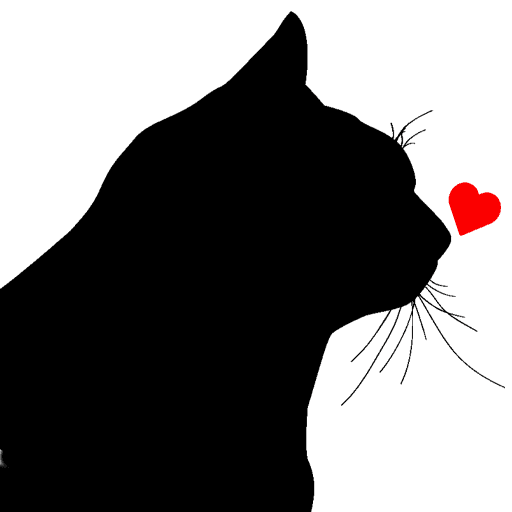Generally, cats undercoat have coats (undercoat and topcoat) that keep them warm and protect them from elements like water and direct sunlight. As such, maximizing the care of their coats and hair is advisable to enhance healthy, tangle-free fur.
Today’s article describes cats’ undercoats and explains why the cleaning process is needed, the procedure of bathing, other types of coats, etc.
Table of Contents
- What is the undercoat?
- Other Layers of a Cat’s Coat
- Different Types of Cat Furs
- Why Does My Cat’s Coat Look Rough or Scruffy?
- Why Is Regular Undercoat Removal Important?
- How to Properly Remove Undercoat
- Mistakes You Might Be Making When Brushing Your Cat
- Undercoat Removal vs. Deshedding
- Tips on How to Remove Tangles and Mats
- How Often Should a Cat Be Bathed?
- Conclusion
What is the undercoat?
The inner layer of short cat hair grows as the foundation is the undercoat or down. Longer hairs make up the topcoat that covers the undercoat.
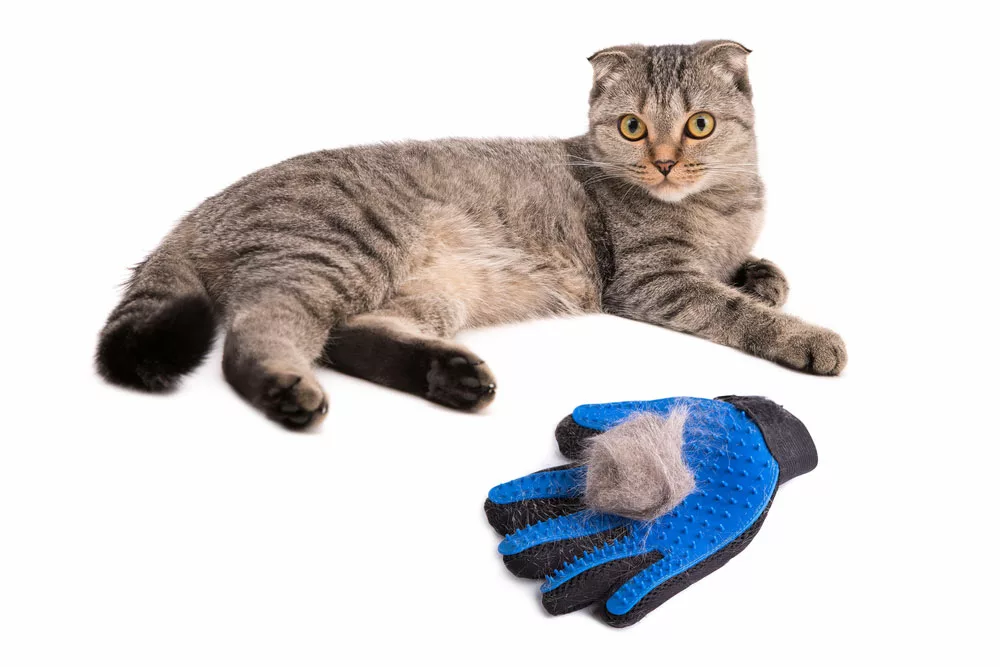
(Brushing a cat’s undercoat with special gloves)
Furthermore, an undercoat hair is closest to the cat’s skin and is silky, soft, and fluffy hence requiring great care in all cats. Its function is to insulate your feline year-round and protect it from the cold.
Other Layers of a Cat’s Coat
In addition to down, various cat hair constitutes a topcoat, as we’ll see below.
Guard Hairs
They are stiff, coarse, and have long hairs that are part of a topcoat. The thickness and length, however, vary in all cats. In addition, felines lack guard hair but grow them over time.
Guard hair is responsible for the following:
- Helping cats detect environmental cues.
- Determining a cat’s fur color and shine.
- Protecting cats from radiation, sun, and fluids.
Awn Hairs
Awn hairs make up most of our cats’ topcoats and sometimes contribute to the concept of triple coats. They are longer than undercoat hairs but half as short as guard hairs. Also, they usually develop alongside guard hairs.
They act as a guard and down hairs and protect cats against radiation, sun, water, and cold.
Vibrissae/Whiskers
Cats have whiskers on the edges of their limbs and faces (sides of the nose, above the eyes). The whiskers help cats navigate their surroundings since they are sensory organs.
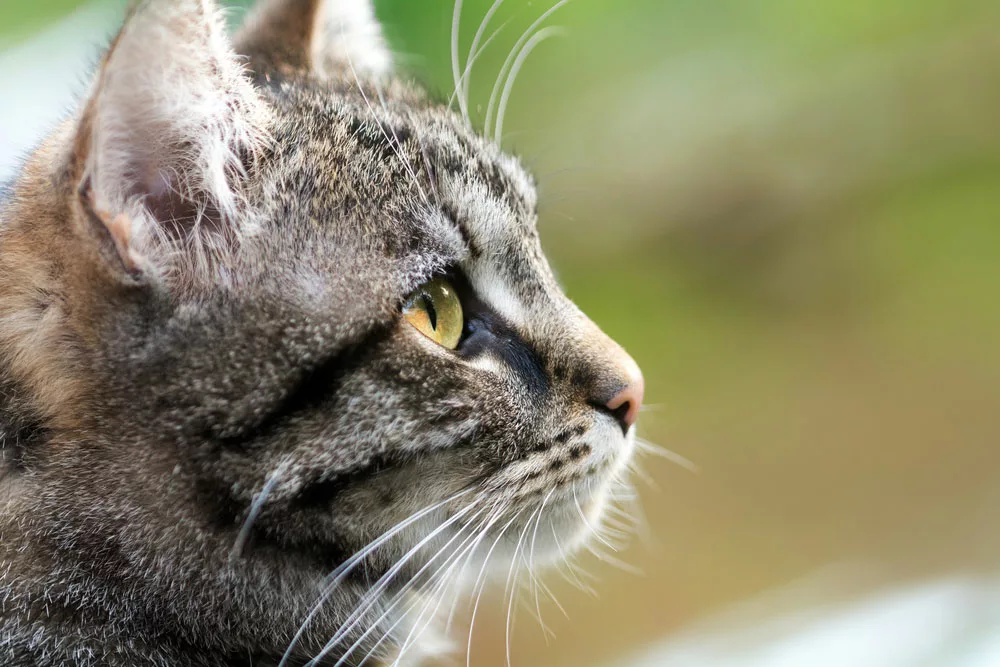
(Cats with whiskers above the eyes and on the sides of their nose)
Different Types of Cat Furs
Now let’s learn about the different types of cat furs and an example of a cat breed in each category.
Hairless Breeds
When citing hairless cat breeds, Sphynx, Peterbald, Donskoy, and Bambino cats always come to mind. They lack a double coat but have a thin layer of vellus hair.
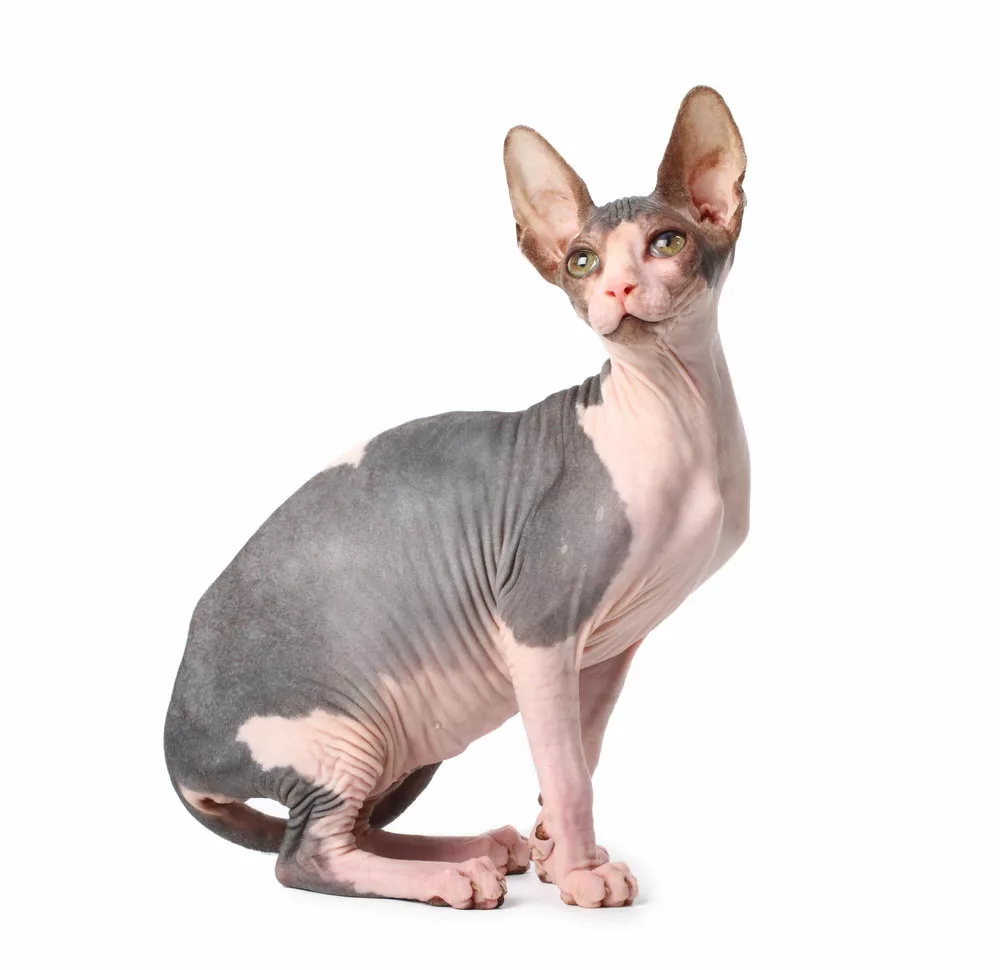
(Sphynx cat)
Curly-Haired Cats
An example of a curly-haired cat is the Devon Rex cat. A genetic mutation (Rex mutation) usually causes a curly coat appearance. They’re not double-haired cats since their coat comprises some gauge hairs and mostly down hairs, with a thin topcoat and predominant undercoat.
Also, they don’t shed as frequently as short- and long-haired cats making them beneficial for allergy sufferers.
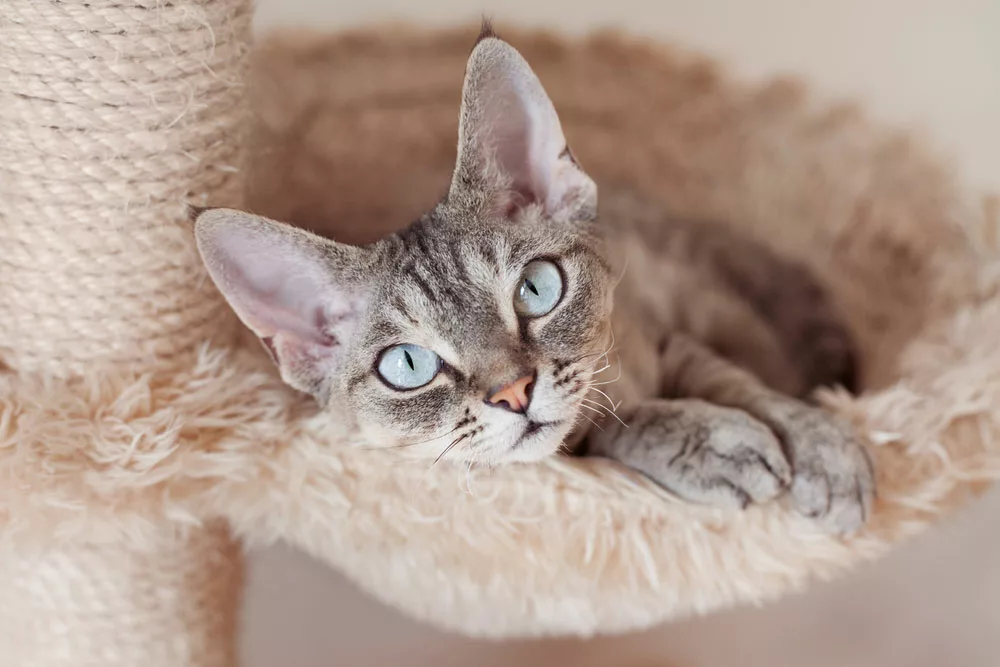
(Devon rex cat)
Short-Haired Cats
Short-haired cats often contribute the most to domestic cats having 2-inch-long fur. Then, they’ve got an undercoat for warmth and a topcoat for protection. Unfortunately, short-haired cats shed, though not as much as long-haired cats.

(British shorthair cat)
Long-Haired Cats
Long-haired cats (having about nine inches of long hair) have a protective topcoat and a warm undercoat. Some examples are Norwegian Forest Cats, Ragdolls, and Maine Coons.
It’s worth noting that long-haired cats need extra brushing and maintenance since a cat’s coat can grow tangled without frequent grooming. Self-grooming and shedding also cause them to cough up fur balls frequently.
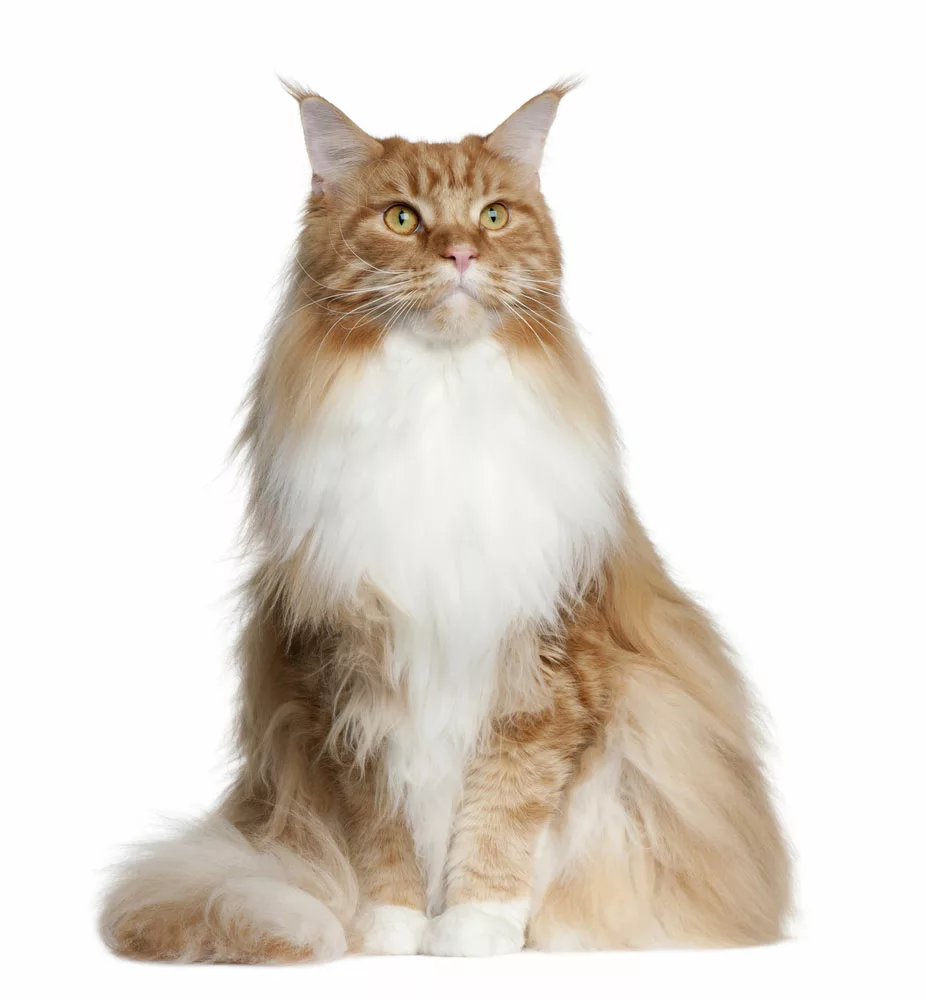
(Maine coon cat)
Why Does My Cat’s Coat Look Rough or Scruffy?
Let us consider the elaborate explanations below.
- Dietary Concerns
Dietary deficits like a deficiency in low-carb, high-fat, and protein-rich diets usually create the roughest coats. Thus, adding krill oil, egg yolk, salt-free sardine, or fish to its food can boost its health and fur appearance.
You can also add extra water, for instance, by providing more wet food or rehydrating dry food. Finally, cat milk treats, goat’s milk, or free ones are ideal for cats who won’t drink water.
- Humidity
During winter, the cat’s fur is most likely to dry up and frizzle. Try using a cool mist humidifier to enhance the moisture level.
- Hormones
Additionally, hormones contribute since unneutered, sexually mature cats may have greasy coats.
Stud tail condition usually impacts coats and skin. Here, skin and excess oils build up near the cat’s tail base and combine with the cat’s saliva while grooming. Degreasing shampoo or vet-prescribed ointment/shampoos can help.
Why Is Regular Undercoat Removal Important?
So, what are the advantages of cleaning your cat’s undercoat?
- Reduces Tangles
When removed quickly, they’re easier to handle than matting and knots.
- Reduces Mats
Remove the undercoat regularly via constant brushing to decrease or prevent matting and its side effects like irritation.
- Reduces Hairballs
Too much hairball ingestion in a cat’s intestine can cause blockages and complications. Grooming will remove some of your pet’s loose hair, preventing hairballs.
- Improved Fur Health
Additionally, by removing the undercoat, natural oils from the cat’s skin will hydrate the whole body and keep its fur smooth, glossy, and gorgeous.
- Cleaner Home
Removing the cat’s undercoat often guarantees fewer hairs to clean, thus ensuring a cleaner household.
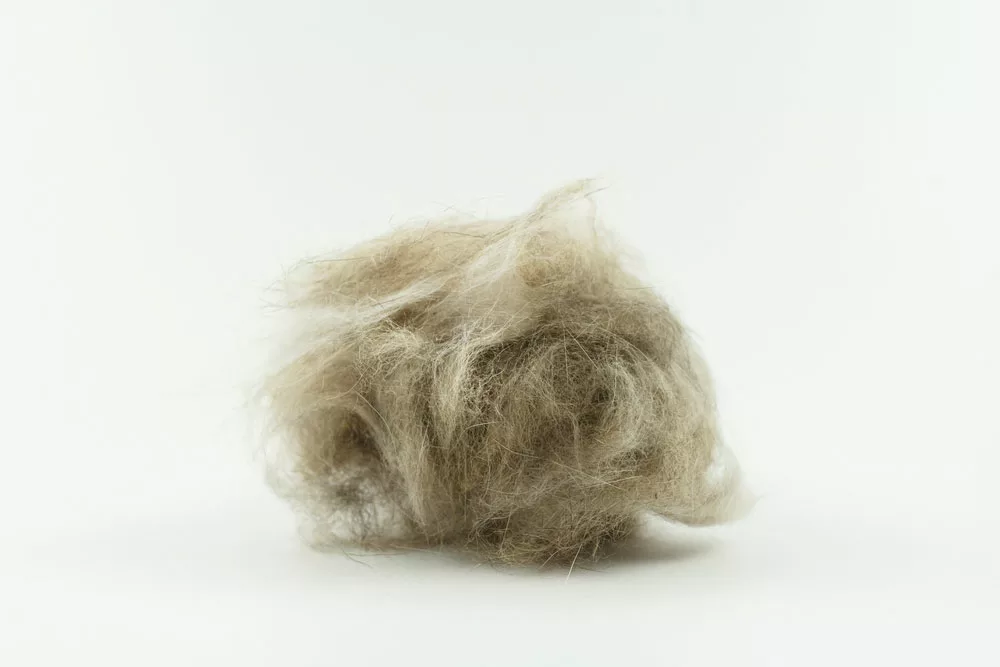
(cat hairballs)
How to Properly Remove Undercoat
If you stick to these guidelines, the brushing session will be swift and smooth:
- Start, place your cat in a quiet place and wait until they settle down.
- Then, please give them a whiff of the instrument to help them get familiar with it.
- Further, pet it from head to tail to make it happy.
- Brush in the direction the cat’s hair grows, beginning from the head and working your way down to the tail using soft stroking movements.
Note; Brush a long-haired cat twice or once daily, while the short-haired one should be twice or once weekly.
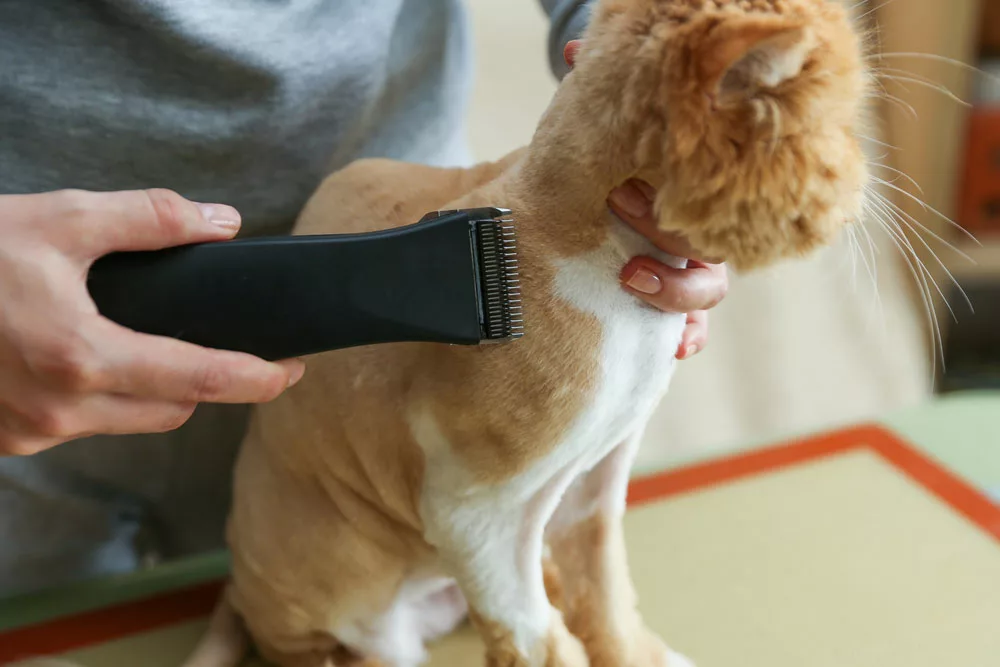
(Cat grooming)
Mistakes You Might Be Making When Brushing Your Cat
They can include;
- Not Brushing Often Enough
Secondly, only brushing your cat’s hair after weeks isn’t ideal. Have a daily brushing routine, particularly for long-haired cats, even though it can be time-consuming. During their shedding season, brush more often.
- Not Using the Right Tools
You’ll need special equipment with long bristles to get to the undercoat via the topcoat hairs, but using any brush or comb won’t suffice. Short-bristled tools are ideal for removing any stray tangles or loose hair.
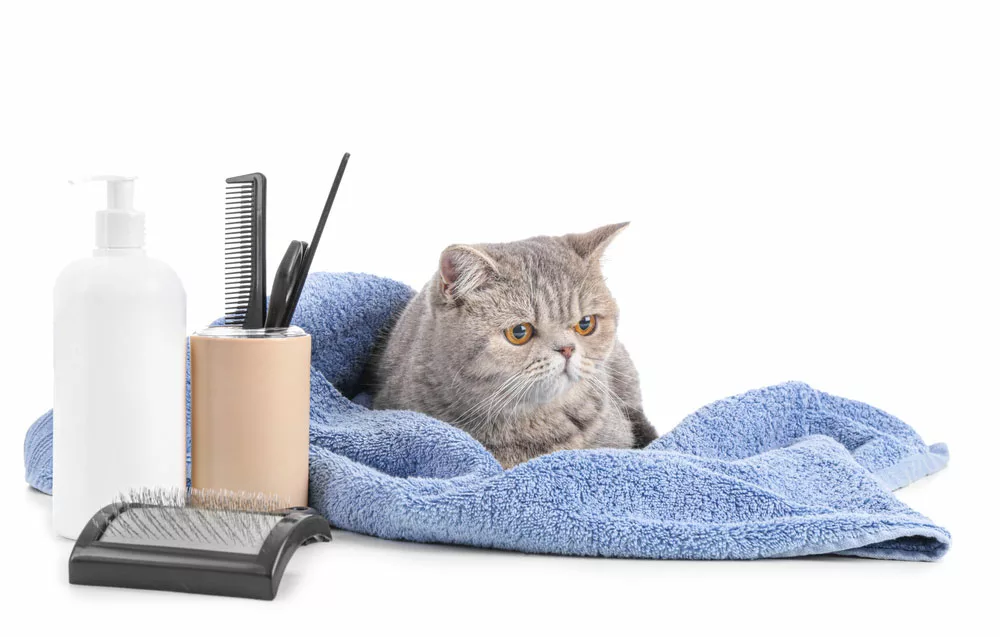
(The right cat grooming tools)
Undercoat Removal vs. Deshedding
Generally, undercoat removal involves using a straight comb to remove loose hair from a kitty’s undercoat.
De-shedding eliminates even more clumped loose hair due to not removing the cat’s undercoat for a long period.
Tips on How to Remove Tangles and Mats
- You can brush or comb it out if your cat has a small tangle, grass lawn, or burr. However, a big tangle or mat formation due to grass awn or burrs will require you to remove the hair clumps. Be careful not to cut the feline’s skin.
- Furthermore, visit a professional vet or groomer when the tangles get pervasive or severe.
- If a mat irritates your cat’s skin, see a doctor for treatment.
- Before bathing your cat, comb out as many tangles/burrs as possible for a smooth wash.
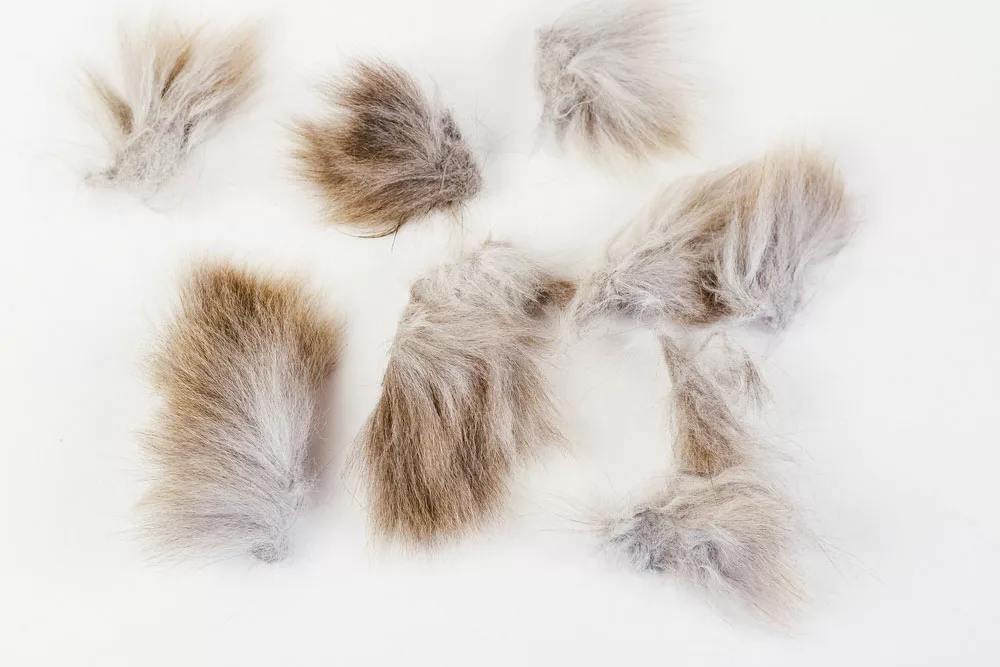
(Tangled lumps of cat hair)
How Often Should a Cat Be Bathed?
Theoretically, once every week is the limit, even though some people argue that it’s too often, while others prefer it regularly.
Bath routine
Bathing a cat is usually simple, with the correct equipment and materials. A cat bathing routine will further make work easier.

(Using a hair dryer on a cat)
Conclusion
All in all, long- or short-haired cats with undercoats require regular grooming and brushing. Even though they’re meticulous groomers, they often need help removing loose undercoat hair.
With the right set of grooming equipment and guidelines, the cleaning should guarantee you improvement.
